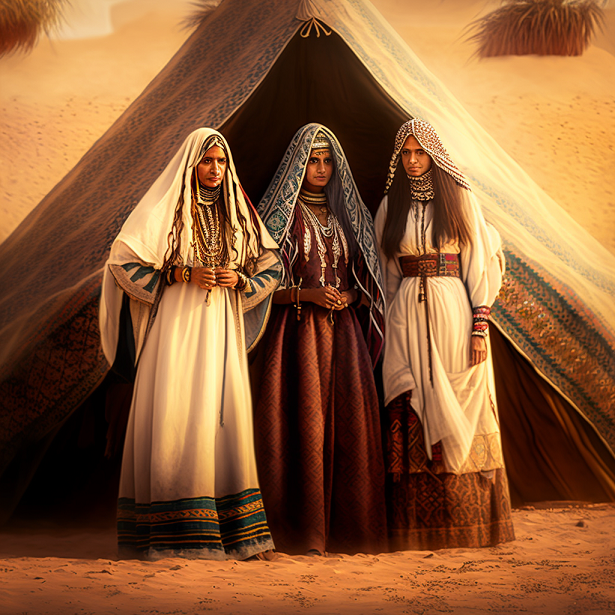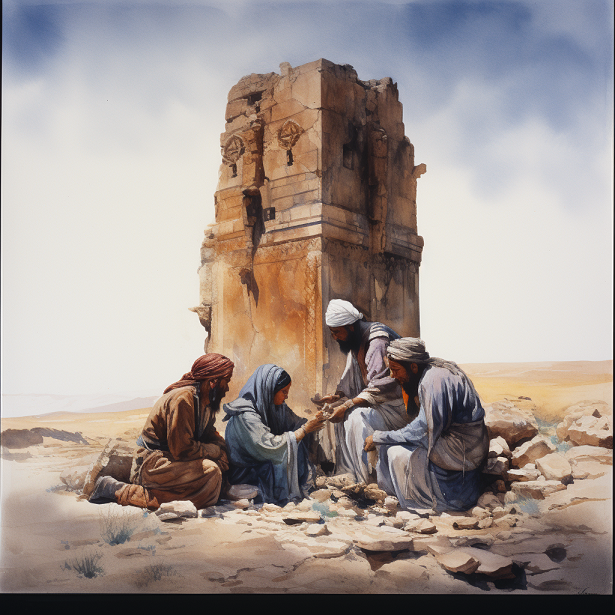In the late 19th and early 20th centuries, amidst the shifting sands and timeless whispers of the Middle East, Gertrude Bell, a pioneering explorer, diplomat, and archaeologist, set out on a remarkable journey along the banks of the Euphrates River. Her narratives, chronicled with eloquence and keen observation, offer a unique lens into the landscapes and civilizations that once thrived along this ancient watercourse. Joining Bell on this odyssey, we navigate the serpentine river, traversing from Tell Ahmar to Kal’at Ja’bar, to unravel the enigmatic stories veiled within the folds of time. The Euphrates, a silent witness to centuries of human history, beckons us to explore its shores and the remnants of civilizations that have come and gone.
Journey and Landscape
As we embark on this historical odyssey, the Euphrates River unfolds before us like a ribbon, winding its way from Tell Ahmar to the formidable Kal’at Ja’bar. The journey, as chronicled by Gertrude Bell, becomes a passage through time, a narrative woven into the very fabric of the landscapes she traversed. The Euphrates, with its turgid waters, holds a special significance for the inhabitants lining its banks. An acquired taste, the river’s liquid history flows through the teapot spouts, invoking contemplation on whether this ancient elixir could be beneficial to the European constitution. Yet, for Bell, it was a faithful companion, a constant presence amid the vastness of the desert.
The desert, with its sharp cold nights, hoar-frosted dawns, and the first rays of the sun illuminating dismantled camps, becomes a canvas painted by the changing seasons. Bell’s prose captures the allure of the open levels and wide reaches of the Euphrates, where the road to Baghdad unfolds with the desert on one side and the water on the other. Through her lens, the desert landscape transcends mere geography; it becomes a character in the narrative, its beauty a silent witness to the passage of time. The ancient structures scattered along the journey stand as sentinels, their weathered stones echoing tales of civilizations long past, waiting to be unveiled.
Tower Tombs at Serrin
Our journey leads us past Kubbeh to Mughrah, and in the hushed stillness of the desert morning, we find ourselves near the village of Serrin. Here, amid the solitude of the stony landscape, the enigmatic ‘Windmills’ rise, not as structures harnessing the wind’s energy, but as tower tombs steeped in history.
The first of these tombs, with its well-preserved stature, reveals secrets dating back to 74 A.D. A Syriac inscription, weathered by time, narrates that this tomb was crafted by one Manu for himself and his sons. As we stand before this ancient testament, the layers of centuries peel away, and we become witnesses to the aspirations and familial bonds of those who laid their kin to rest in this sacred space.
The second tower, adorned with fluted engaged columns, beckons us into the artistic embrace of its architectural grandeur. Four columns on either side, their Ionic capitals supporting a plain Ionic entablature, speak to the craftsmanship of a bygone era. Each element, from the intricate mouldings to the symphony of fasciae, narrates a story etched in stone. Here, in the silence of Serrin, the Windmills transcend their mundane designation, standing as majestic tower tombs, resonating with the echoes of ancient rites and rituals.
Serrin and Local Stories
Beyond the Windmills, Serrin unfolds its secrets, revealing rock-cut mausoleums nestled in the hillside—a silent necropolis bearing witness to the passage of countless souls. As we venture into this sacred ground, now half-choked with stones and earth, the remnants of a forgotten town begin to surface. The hill, a necropolis for a settlement lost to time, becomes a poignant reminder of lives once lived and commemorated in the rock-cut chambers.
Ibrahim Pasha
In the shadow of the towers, local stories come alive, weaving a tapestry of intrigue and drama. The tale of Ibrahim Pasha, a figure both feared and revered, echoes through the windswept landscape. His swift downfall, shrouded in mystery and local lore, becomes a reflection of the tumultuous political and social landscape of northern Mesopotamia. The narratives shared by Jirji, the Christian guide from Aleppo, paint a nuanced picture of the complexities and contrasts that defined life in this region. Contempt for the nomadic tribes’ choice of dwelling in the desert’s black tents mingles with a fearful acknowledgment of the authority they wielded from such humble abodes.
Amidst the rock-cut mausoleums and the tales of fallen leaders, the essence of Serrin transcends its physical ruins. It becomes a repository of stories, both grand and mundane, etched into the very fabric of the desert—a living testament to the ebb and flow of life along the Euphrates.
Kal’at en Nejm and Weldeh Tribe
Bell’s journey along the Euphrates brought her to the imposing fortress of Kal’at en Nejm, perched atop a rocky spur that commands a regal view of the river below. The castle’s formidable walls, seemingly ageless and as imperishable as the rock itself, stand as a silent testament to a bygone era of ancient wars and strategic fortifications. As we turn away from this stern ghost of history, the Weldeh tribe unfolds before us—a living community nestled in the embrace of the open spaces and broad sands.
Welcomed into the encampment of Sheikh Sallal, a member of the Weldeh tribe, we gain insights into a way of life intricately connected to the rhythms of the desert. Reduced to circumstances of hardship due to a clash with the government, Sheikh Sallal’s narrative unveils the challenges faced by the Weldeh people. The nomadic existence, marked by a symbiotic relationship with the land, becomes a poignant reflection of resilience and adaptation. The government’s interventions, illustrated through the enlistment and subsequent desertion of Sallal’s brother, cast a shadow over the tribe’s fortunes, leading to the poignant sale of cherished possessions—a stark reminder of the delicate balance between tradition and external pressures.

Further Exploration of Historical Sites
Gertrude Bell’s odyssey along the Euphrates continued, leading her to lesser-known yet captivating sites—Munbayah, Jerniyeh, and Tell Sheikh Hassan—each bearing the imprint of ancient civilizations and the whispers of forgotten tales.
Munbayah, its name signifying an elevated spot, unveils itself as a complex of irregularly-shaped double enclosures, their walls marked by high grass mounds. The outer wall, terminating abruptly on the north side, hints at the possibility of a tower or bastion, while a well-defined gate opens towards the south. Amidst these grassy heaps, the remnants of massive polygonal masonry peek through the soil, hinting at a history obscured by time. Speculations arise, suggesting Munbayah as the elusive Bersiba from Ptolemy’s ancient catalogue—a tantalising connection to the cartographic echoes of antiquity.
Jerniyeh, a solitary hill rising above the plain, beckons us with its enigmatic trio of mounds. As we ascend, the landscape reveals itself, bearing witness to the laborious excavation of fine cut stones by the hands of ancient craftsmen. The potential watch towers or tomb connections become apparent, leaving us to contemplate the dual roles these structures might have played—guardians of the land or repositories of ancestral memories.
Tell Sheikh Hassan, a mere twenty minutes downstream, extends the narrative. Vestiges of construction near the water’s edge and scattered remnants of glazed Arab pottery paint a vivid picture of a thriving settlement. In this stretch of the Euphrates, approximately three miles in length, the left bank unfolds as a silent guardian of history, its ruins and fortifications bearing witness to epochs long past.
Cultural and Political Observations
In the midst of her expedition along the Euphrates, Gertrude Bell’s keen observations extend beyond the architectural marvels and historical remnants, delving into the intricate tapestry of cultural and political dynamics that shape the lives of the people along the river’s banks.
The impact of governmental actions reverberates through the narratives of tribal leaders like Sheikh Sallal, who, grappling with the enlistment and subsequent desertion of a family member, finds himself ensnared in the complex web of authority. The government’s intervention, seizing flocks and imprisoning tribal leaders, emerges as a recurring theme—a stark testament to the perpetual struggle for autonomy in a landscape where tradition and modern governance collide.
Bell’s reflections guide us through the challenges faced by the people of the region. The nomadic existence, intertwined with the ebb and flow of the seasons, becomes a metaphor for the resilience of a population navigating the delicate balance between tradition and external pressures. It is within these narratives that the broader socio-political landscape unfolds, revealing the intricate dance between the established order and the inherent autonomy cherished by the communities along the Euphrates. The echoes of government actions become a poignant backdrop to the human stories etched into the very fabric of the desert—a testament to the indomitable spirit that persists against the backdrop of shifting sands and political tides.
A Struggle Against the Elements
Gertrude Bell, an intrepid explorer of the past, faced formidable geographical challenges during her Euphrates journey. The attempt to cross the river at Sheikh ‘Arud became an arduous task due to the unrelenting force of the wind. This natural antagonist not only hindered the expedition but also disrupted the delicate balance of outdoor activities, making the use of essential tools such as the compass, camera, and measuring tape a formidable feat. In the face of this untamed force, Bell’s expedition found itself at the mercy of the elements, a testament to the unpredictable nature of the environment she sought to conquer.

